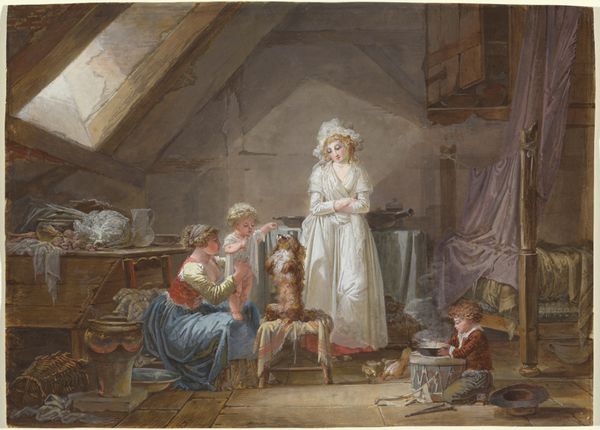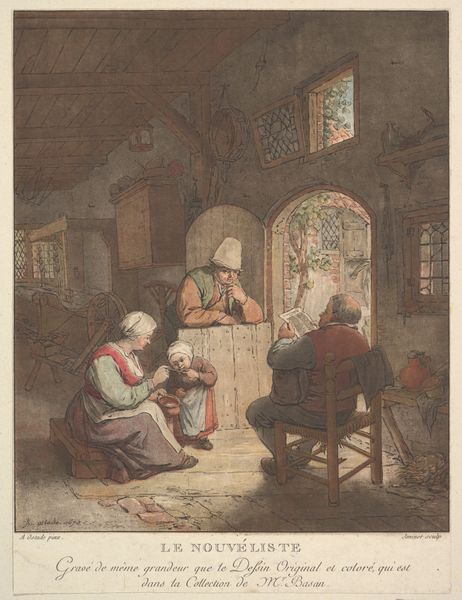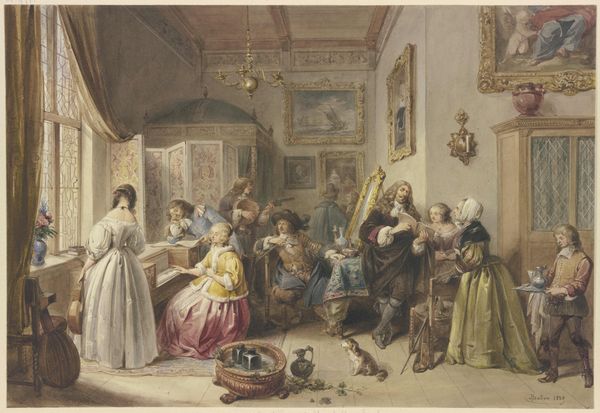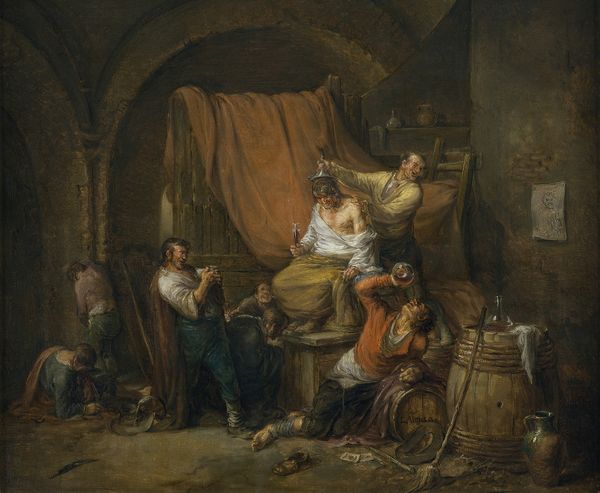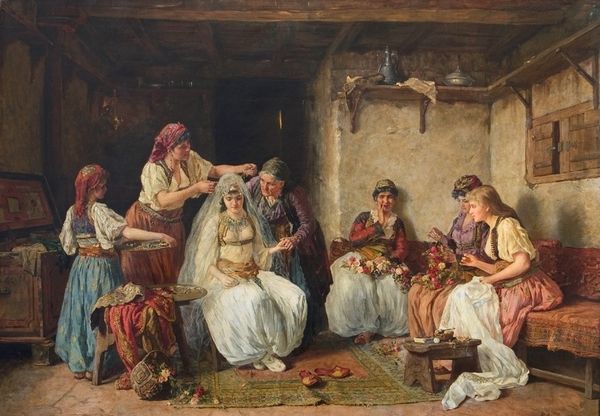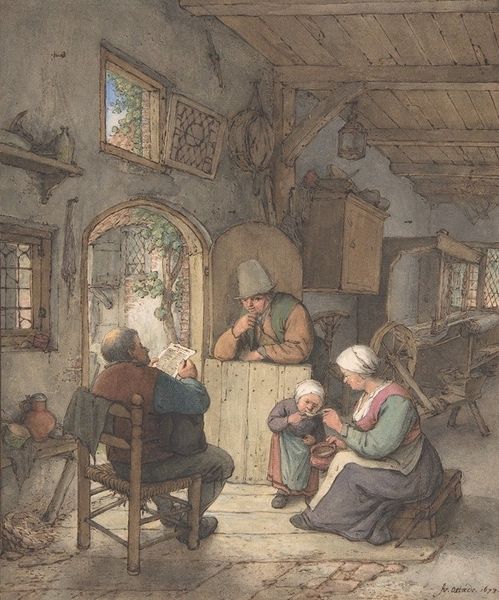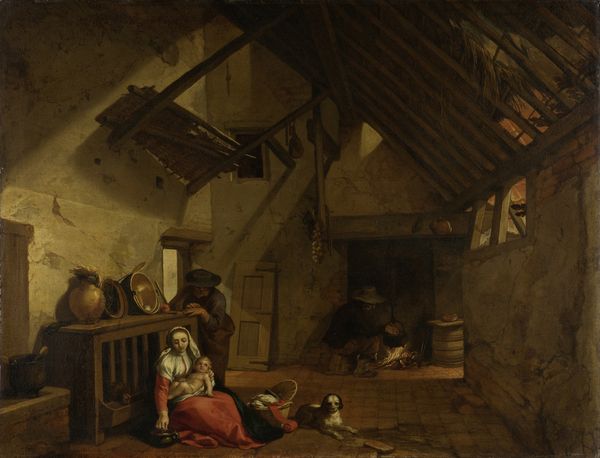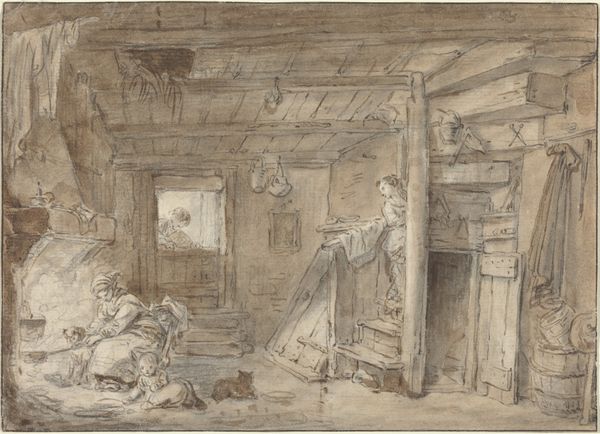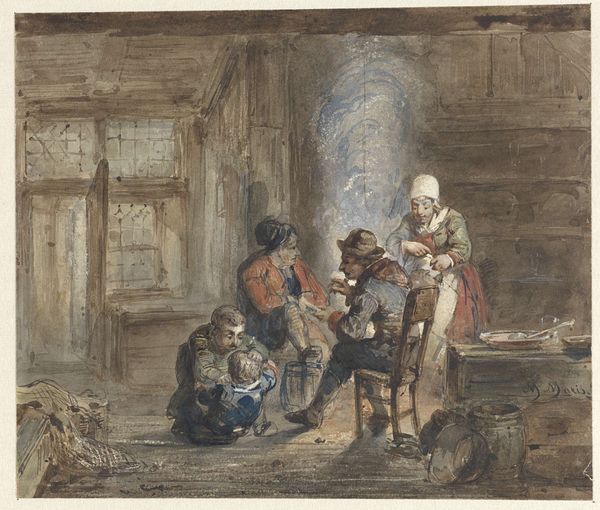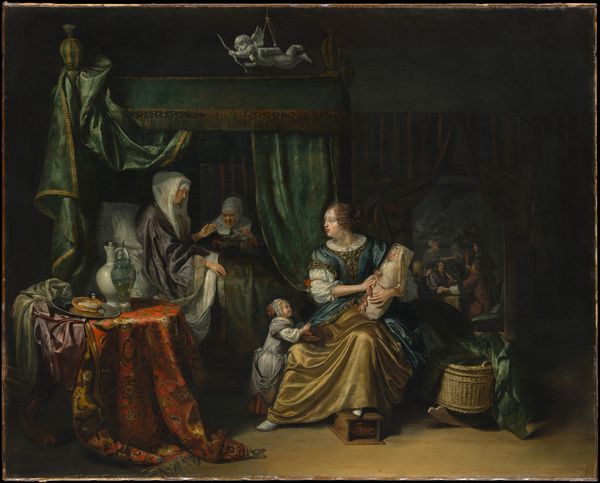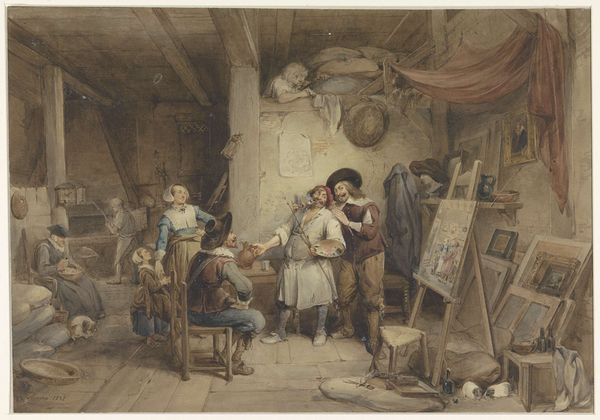
drawing, painting, print, paper, watercolor
#
portrait
#
drawing
#
narrative-art
#
painting
# print
#
paper
#
oil painting
#
watercolor
#
romanticism
#
watercolour illustration
#
genre-painting
#
mixed media
#
watercolor
Dimensions: 288 × 386 mm (primary support); 295 × 389 mm (secondary support)
Copyright: Public Domain
Curator: "The Evening Prayer" by Jean-Baptiste Mallet, dating back to 1790. This genre scene, rendered in watercolor and possibly some mixed media on paper, resides at the Art Institute of Chicago. It depicts a large family listening to a reading by candlelight. Editor: It evokes a sense of quiet reverence and domestic tranquility, doesn't it? I'm immediately drawn to the dramatic interplay of light and shadow; it feels almost theatrical, stage-lit. Curator: Precisely. The strong chiaroscuro contributes to its narrative depth, guiding the viewer's eye. Observe the compositional structure: The family is gathered, hierarchically arranged around the central figures of the reader and the woman in pink. Editor: It's striking how the composition emphasizes the importance of shared values within this familial unit. We see piety visibly enacted in a domestic sphere that seems somewhat cluttered and disheveled—certainly not a palatial setting. Does the space tell us anything specific about their social standing? Curator: The slightly dilapidated attic space certainly implies a more modest status, aligning with the broader romantic movement's interest in idealized portrayals of everyday life. The use of watercolor creates a soft, intimate atmosphere, which serves to enhance the sentimental nature of the subject matter. Editor: Indeed. And that sentimental appeal speaks to its socio-political context, reflecting the emerging middle-class values and the idealization of family life that characterized late 18th-century Europe. The artwork promotes family piety and reinforces a conventional gendered division, placing women in the private sphere, instilling moral value to children. Curator: We might also examine the semiotic potential of the elevated platform or lofting space in the background filled with what appears to be livestock and supplies—could it represent the elevation of spiritual values above earthly concerns, perhaps? It presents intriguing symbolic juxtapositions. Editor: That's compelling! Examining the space gives clues on possible daily routines. A final thought: What I initially read as "tranquility" could, viewed from another angle, signify the social constrictions or expectations of the time—an insight that challenges its first, somewhat deceptive serenity. Curator: An excellent counterpoint, emphasizing how our interpretation can evolve with deeper contextual consideration. I concur. Editor: Ultimately, Mallet gives a remarkable peek into how devotion shaped everyday realities back then.
Comments
No comments
Be the first to comment and join the conversation on the ultimate creative platform.
